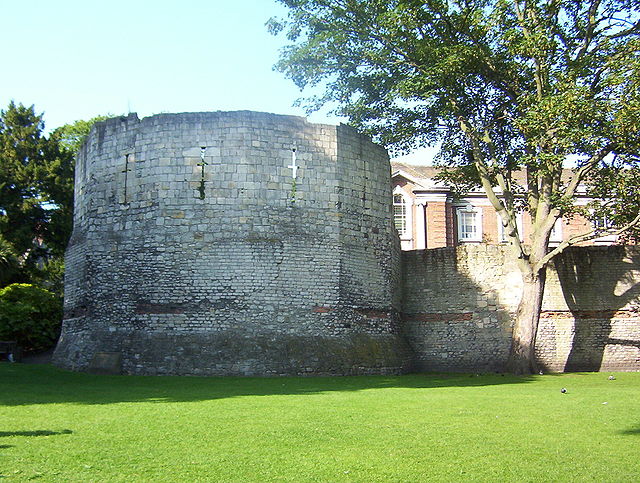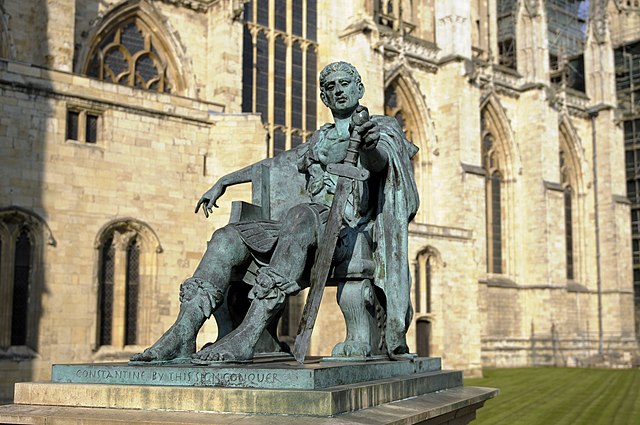York Castle is a fortified complex in the city of York, England. It consists of a sequence of castles, prisons, law courts and other buildings, which were built over the last nine centuries on the south side of the River Foss. The now ruined keep of the medieval Norman castle is commonly referred to as Clifford's Tower. Built originally on the orders of William I to dominate the former Viking city of Jórvík, the castle suffered a tumultuous early history before developing into a major fortification with extensive water defences. After a major explosion in 1684 rendered the remaining military defences uninhabitable, York Castle continued to be used as a gaol and prison until 1929.
Clifford's Tower, the keep of York Castle
A cross-section of the motte at York Castle, produced in 1903 by Sir Basil Mott; "A" marks the 20th-century concrete underpinnings of the motte; the low walls enclosing the base of the motte are a 19th-century addition
A reconstruction of York Castle in the 14th century, viewed from the south-east
A plan of Clifford's Tower. A=Gateway; B=Stairway to Chapel above; C=Staircases to upper levels and parapet; D=Loop hole recesses; E=Well; F=Fireplaces; G=Guardrobe chambers
York is a cathedral city in North Yorkshire, England, with Roman origins, sited at the confluence of the rivers Ouse and Foss. It is the county town of Yorkshire. The city has many historic buildings and other structures, such as a minster, castle, and city walls. It is the largest settlement and the administrative centre of the wider City of York district.
Clockwise from the top left: Micklegate Bar; York Minster from the city walls; Lendal Bridge; an aerial view of the city; and the castle
Roman wall and the west corner tower of Eboracum. The top half is medieval.
Roman Emperor Constantine the Great proclaimed Emperor at York in 306 AD.
A panorama of 15th-century York by E. Ridsdale Tate; York Castle is on the right hand side of the river, opposite the abandoned motte of Baile Hill.








